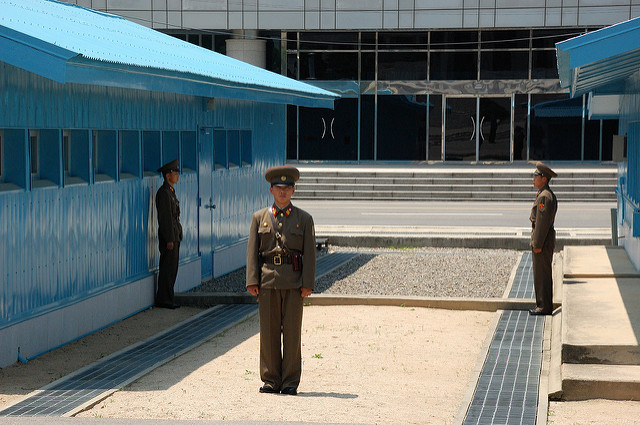During a recent visit to Asia, I took the opportunity to join a tour to the notorious demilitarized zone that separates North and South Korea. The “DMZ” as it is more commonly referred to, is 4 kilometers wide and has served as a buffer zone between the two states since the Korean War Armistice Agreement of 1953.
Lacking a peace treaty to bring the Korean War to an official conclusion, the countries remain technically at war, which makes the plight of the Kaesong Industrial Complex—a jointly run industrial park—all the more intriguing for visitors.
The complex, located just north of the DMZ, has manufactured goods for export into the South since 2004. According to global news agencies, there are 124 South Korean companies operating within this area and our tour guide informed us that some 50,000+ workers from the North can expect to earn approximately US$100 per month for their services.
If these figures are accurate, these employees earn only 6% of the average household disposable income in the South. However, upon closer inspection, this facility is less about profit margins than it is a step toward re-unification; a concept that was repeatedly referred to throughout our tour.
Despite this positivity, my visit unfortunately coincided with an indefinite closure of the Kaesong Industrial Complex—a response by the South to the launching of a North Korean long-range rocket. While this is not the first time the complex has had to close, it should be noted that past shut-downs had been initiated by the North. Whether we will see future reconciliation on this front remains open to debate.
While we don’t know if the lights are out for good or not at Kaesong, my experience was that commerce is not completely absent from the region. As just one of 42 paying visitors on my tour, I saw several other bus-loads of sightseers at multiple stops. Furthermore, whether it was in the Joint Security Area, the Third Infiltration Tunnel or the Dora Observatory, we found gift shops were never all that far away. This offered me the opportunity to buy key rings, figurines and even soju—a distilled rice liquor—that reputedly came from the North.
From my various vantage points (and despite technically setting foot inside the secretive state), it is impossible to tell what life is truly like in North Korea, north of the DMZ. Whether North Korea will ever see projects such as Kaesong as a pathway to economic development remains to be seen. But I would like to think that one day I’ll be able to return to this fascinating region in an investment capacity.
Colin Dishington, CA, CFA, is Research Analyst at Matthews Asia.


